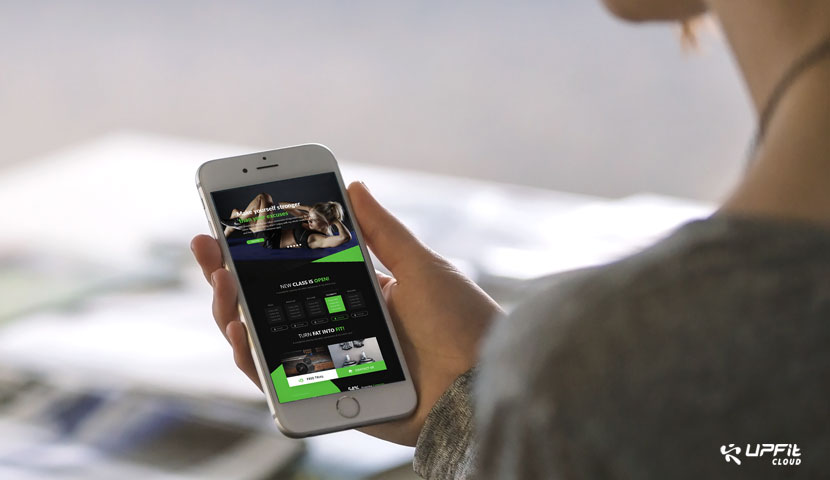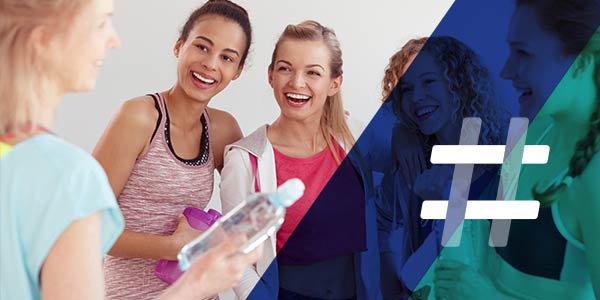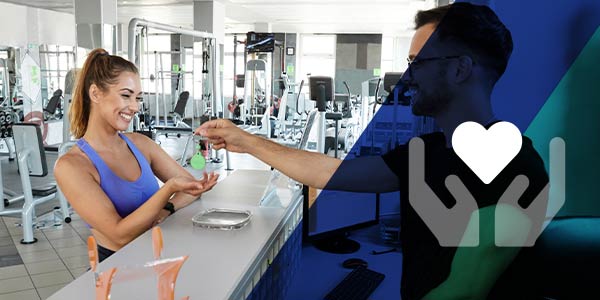How to start a newsletter for your gym’s members

One of the most effective online marketing channels is also one of the oldest – emails, more precisely, newsletters. Even though social media seems to be a more suitable medium, email remains the most effective way to communicate with a specific group of people. That's because you know exactly to whom you're sending the information. Email is used by most of the population, regardless of age or technical knowledge.
Since few fitness clubs use the newsletter as a marketing method, it is also a great way to distinguish your brand from the rest of the competition. All the while providing members and potential customers with helpful content.
In addition, through a constant email feed, you keep in touch with members more efficiently. So even when they come to the gym less often, you have more chances to convince them to use their membership.
When you use this method correctly, a newsletter can help you convert potential customers into members, upsell active members, reactivate unsubscribed members, and improve your brand awareness efforts.
So, let's see what a fitness newsletter is, why you need one, and how to launch one.
What is a newsletter?
A newsletter is an email with various types of information sent at specific intervals. The newsletter is part of a marketing strategy. It should have the same voice and design as the rest of the campaigns, whether we are talking about posts on your Facebook page, your website's design, or the club's posters.
A newsletter can contain various information, from useful articles on the club's blog to services, trainer highlights, or advice on training or nutrition.
An essential aspect of any newsletter is consistency. So, decide from the beginning how often you want to send the email and then stick to the schedule.
I suggest starting with a newsletter twice a month. Then, depending on its success, increase the frequency to once a week.
In the fitness context, more than one newsletter a week can become spammy and puts pressure on the team running it to find new content.
Therefore, sending a newsletter less often but with interesting content that most recipients like is wiser. Rather than a newsletter with uninteresting content more often.
Choose a day of the week and time to send this newsletter. Most mailing services offer the option to schedule the email, so it won't be a problem for you.
For example, our newsletter is sent every Thursday at 9 am.
This way, members get used to the routine of receiving an email from you on a specific day and time and will be more receptive to it.

What technical solutions do you need to send a newsletter
A newsletter is generally sent through a dedicated service. You have surely heard of MailChimp, Substack, or Sendinblue. These are some of the most popular marketing and newsletter platforms, but hundreds of such services exist.
So, the first step is to choose the right platform based on your budget and marketing strategy.
I suggest checking that the platform you choose offers you all the functionality you need to be compliant. For example, a dedicated flow for those who sign up so they can confirm they want to sign up for the newsletter, a detailed history of all sign-ups, and a simple unsubscribe flow.
Another important aspect is the design of the email. As I said above, the email must bear the club's branding elements. Most newsletter software allows you to create your own email design. This is where your or your team's design knowledge comes into play. If you don't have experience in the field, I suggest you contact a marketing agency that can help you come up with a suitable design.
A more practical solution is to use one of the premade templates. Almost all newsletter platforms offer some templates that you can use. The risk is that the email will not match the rest of your club's branding or look similar to other newsletters from companies that have used the same template.
In this case, I suggest testing the email editor before investing in a subscription. The simpler it is to make a newsletter, the less time you will spend on it.
At the same time, you have to set up a way for those who want to sign up for the newsletter. This means a form on the club's website or one on the Facebook page. Then, depending on the specifications of the site and the chosen referral service, the email addresses of those who register are automatically saved in the referral platform, or you will have to add them manually.
Certain gym management software, such as UPfit.cloud, of course, have dedicated modules for sending newsletters. However, this option is simpler because you have all the messages sent to the member in one place: the automatic emails and the newsletter.
This way, you can more easily understand each person's habits, what kind of messages they read and what they don't, in the context of the purchased services and their age. In addition, transferring email addresses from one platform to another is no longer necessary. The communication settings apply everywhere, without you having to manually change them every time a member no longer wants to receive the newsletter.
In addition, depending on the management platform you use, you can also have email templates with the club's branding so that you just insert the desired text and pictures.
How to launch a newsletter
Launching a newsletter means more than writing an email and sending it. First, you need a list of contacts to send the email to.
You can start with the email addresses of your members. Still, you also need to consider the data protection laws in your country.
You should refrain from sending the newsletter to all your email addresses without asking permission first. You can be liable for a serious fine, or at the very least, you'll get some annoyed members.
Instead, you can heavily promote the newsletter before launch, organize contests or offer discounts to those who sign up.
A great way to attract more members is to automatically send them a "how do you want us to keep in touch" email when they purchase a new membership. You can give them more options, including signing up for the club's newsletter. That way, all new members will know of its existence.
Remember to promote the newsletter on your social media as often as possible and on any other marketing channels. For example, if you have a mobile app for members, post a notification about the launch.
The newsletter should also be promoted in the club by your receptionists or through various posters with QR codes that open the registration page.
The promotion campaign should start at least one month before sending the first email. Thus, you can collect an extensive list of email addresses to send your first newsletter.
Tips for an effective newsletter strategy
In our experience with the fitness clubs we have worked with, the newsletter idea always seems attractive until it has to be implemented. Even when using UPfit.cloud's marketing module, which no longer requires any setup or referral service, it still seems like a challenging project.
We also know from our experience with our newsletter that you don't always have inspiration or new ideas.
So here are some tricks that work for us and that you can use without any problems.
First, before launching, develop an overall strategy. Determine how often you send the newsletter and what general topics you want to cover.
Then make a plan for the first two months. First, calculate how many editions of the newsletter you will send and determine each topic. Then write the content and create the email itself for at least the first month. Only then should you send the first newsletter.
Schedule a few days in the middle of the month to design the next month's emails. Thus, you have enough time to prepare interesting content without being pressed for time.
Consider the time of year you send the email to provide relevant information. For example, if you send a newsletter in the summer months, you can offer details on how to train to get the beach body you want or what summer snacks don't make you gain weight.
A quick catch-up...
The best newsletter emails provide relevant information to members to train more effectively and achieve their goals. At the same time, useful content validates their decision to invest in a membership to your gym. It may even convince them to purchase additional services.
So, you should not neglect this opportunity to reach out to your members directly and consistently, to maintain a close relationship with members and thus increase retention.
.
Are you struggling to increase the number of new members joining your fitness center?
There is an easier way to get more members! Communicate efficiently with them through automated emails, provide them the option to purchase memberships online, delight them with a professional mobile app and member account, and surprise them with fast services at the reception desk.
With UPfit.cloud, everything is done quickly, and you can start seeing results in a matter of days. Find out the advantages of our platform in a 20-minute demo session.
REQUEST A DEMO
We also recommend...
How to improve the sales process at your fitness club
You can always work on a few aspects that can be improved constantly regarding your sale process.
Read MoreEuropean Health & Fitness Forum – the first hybrid edition of the EuropeActive event
This year's edition of the European Health & Fitness Forum (EHFF), which draws fitness industry leaders from all over Europe, will be in a hybrid format, where speakers will be on the stage in Koln, but the entire forum will be broadcast online.
Read MoreThe main challenges receptionists face and how to help them overcome them
Just like the new member needs an onboarding process when buying a gym membership, the new employee needs time to learn about their job.
Read MoreFree guides for your gym
We have created a series of free guides that will help expand your gym: advice on increasing sales, lead management, optimising your online marketing strategy, creating a corporate program, and so much more. There are dozens of e-books and guides with useful information and ideas for ambitious gyms, that are willing to use all the tools available to grow their business and recruit more members.
Software that perfectly adapts to your gym's activity
Each gym is unique. That is why UPfit.cloud has a wide range of services, tools, and features that perfectly match your business.
Regardless of how you manage your gym or fitness club activity, UPfit.cloud can be customized so it's easy to use for your team and simple for your members.

Aerobic studio
Discover the benefits
Fitness center
Discover the benefits
Pilates studio
Discover the benefits
Yoga studio
Discover the benefits






















